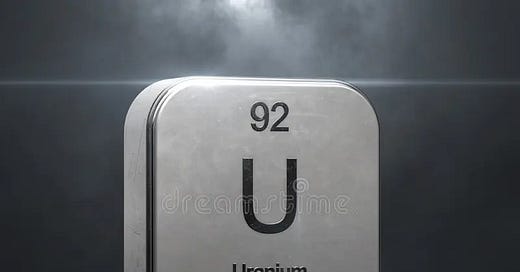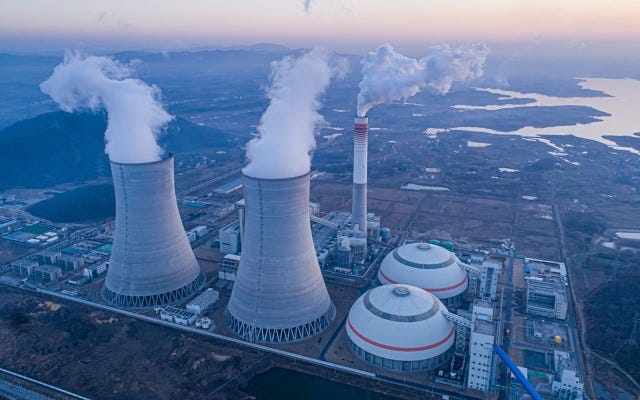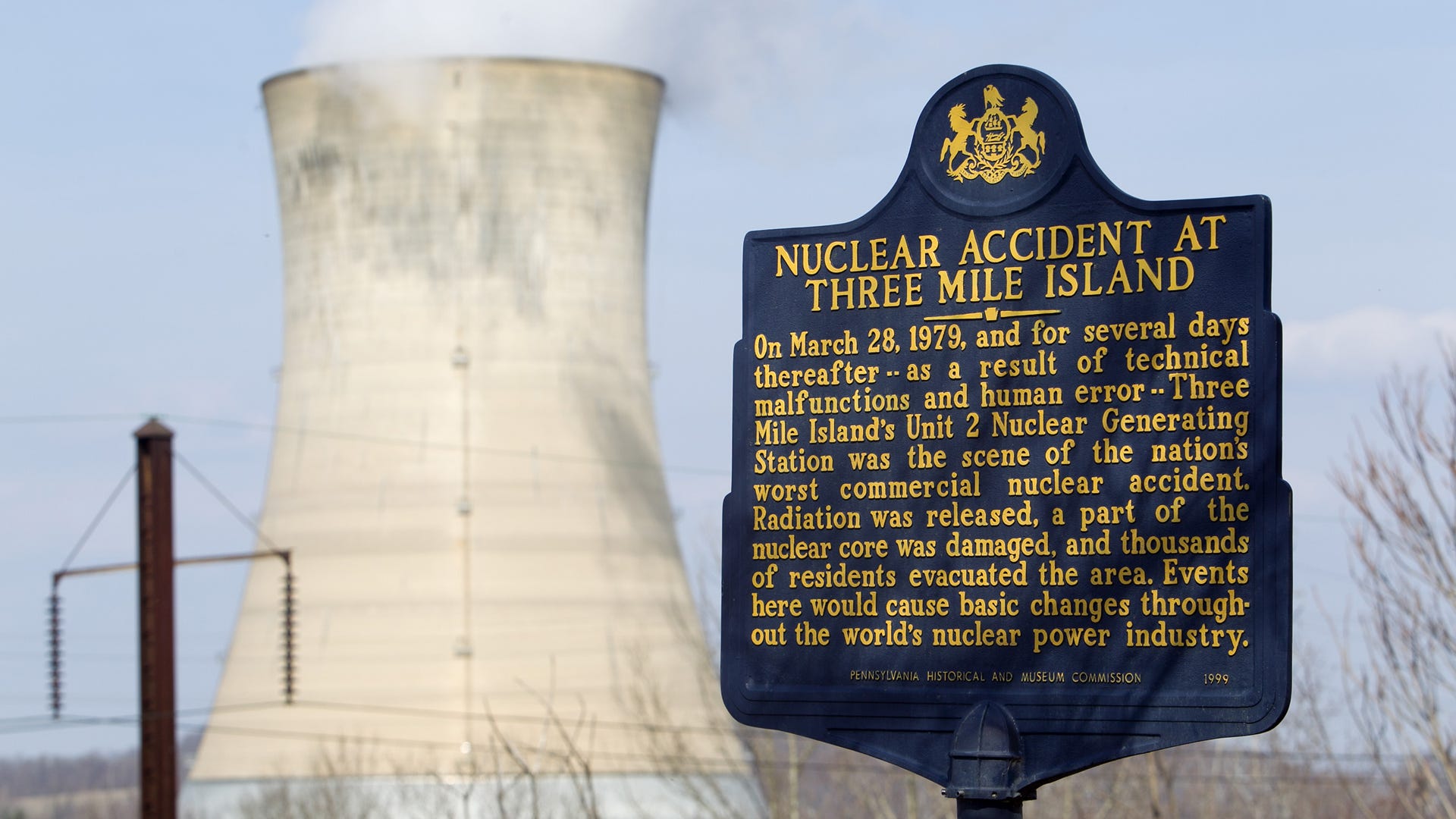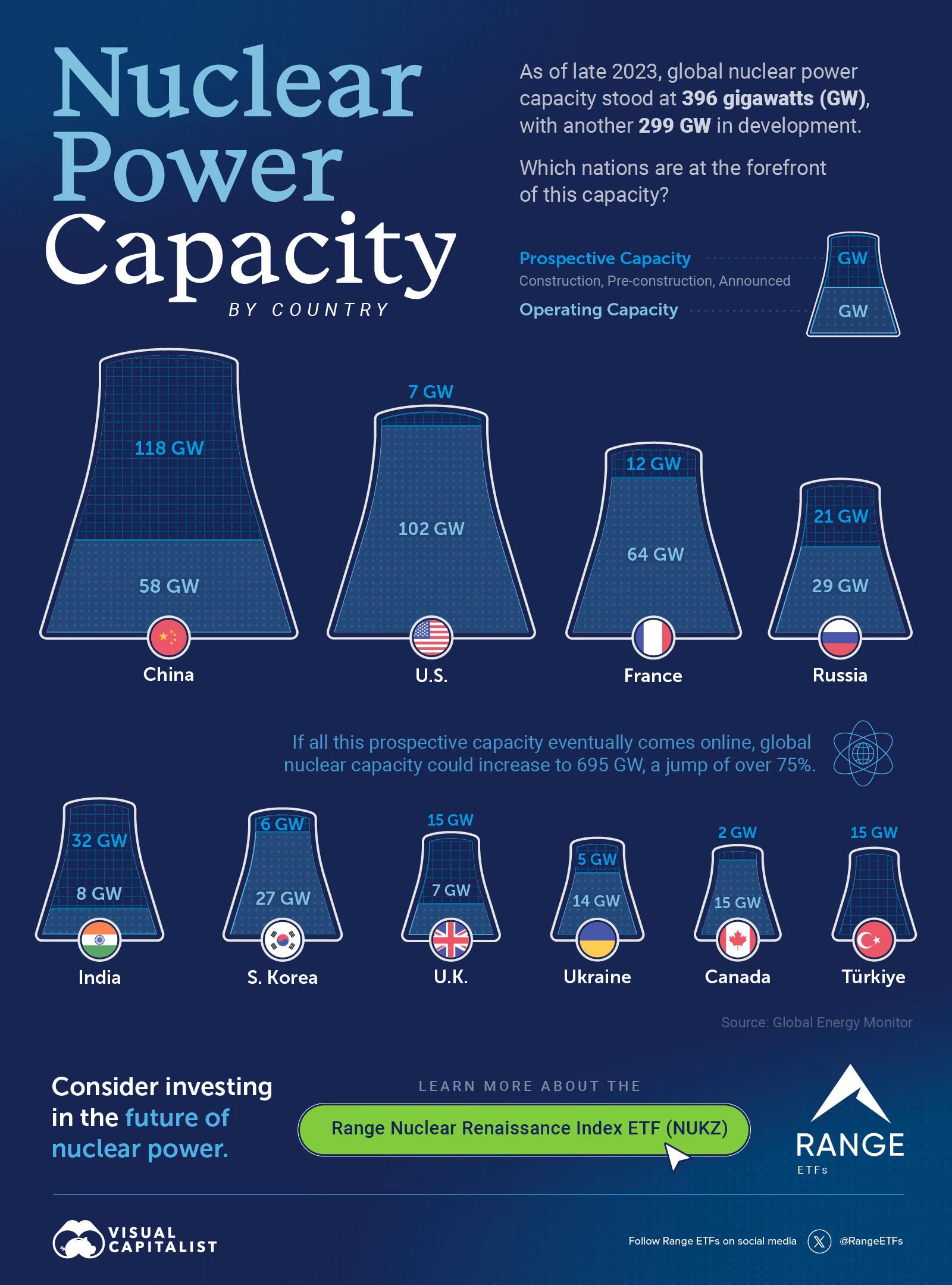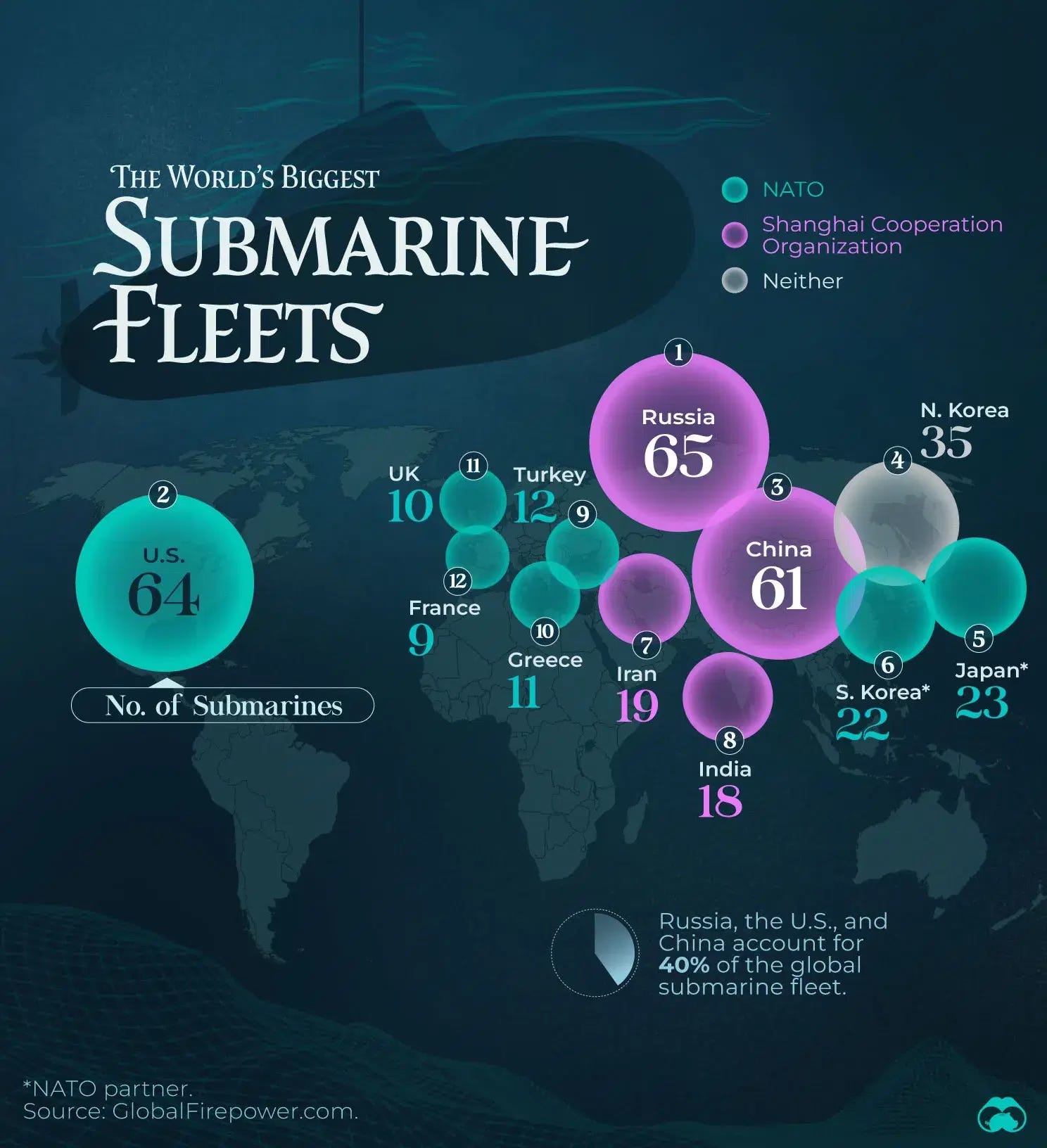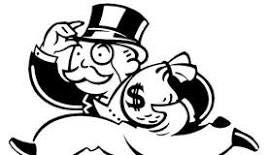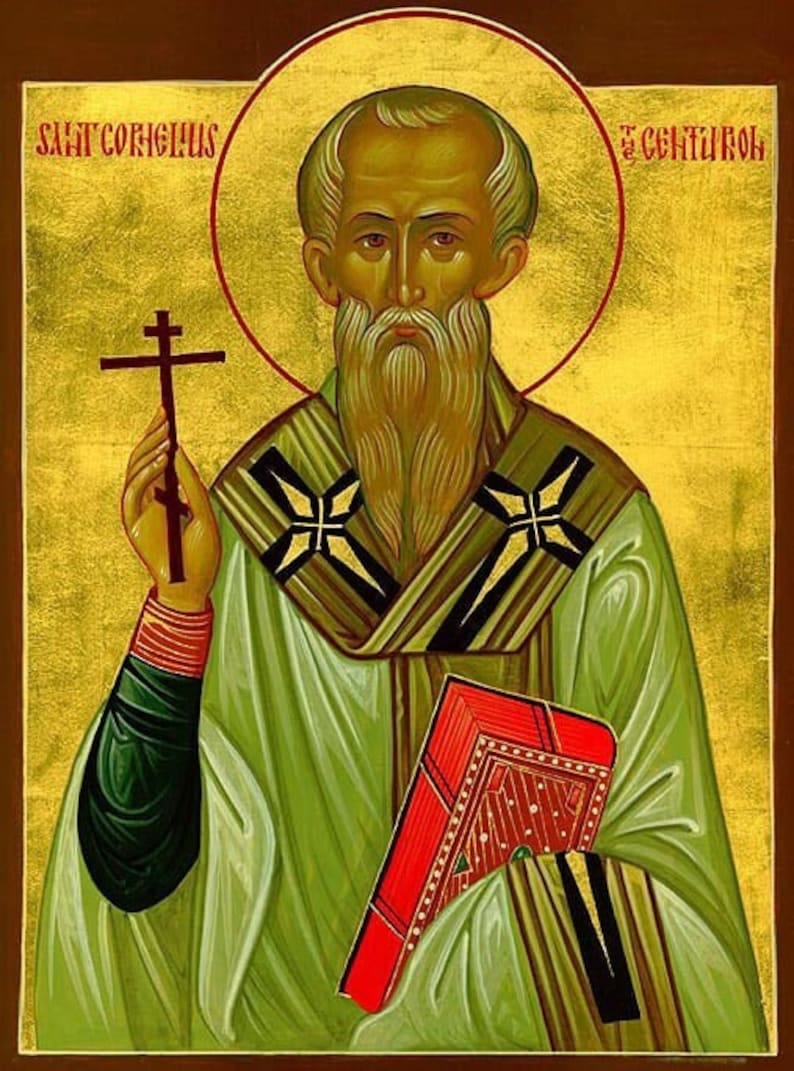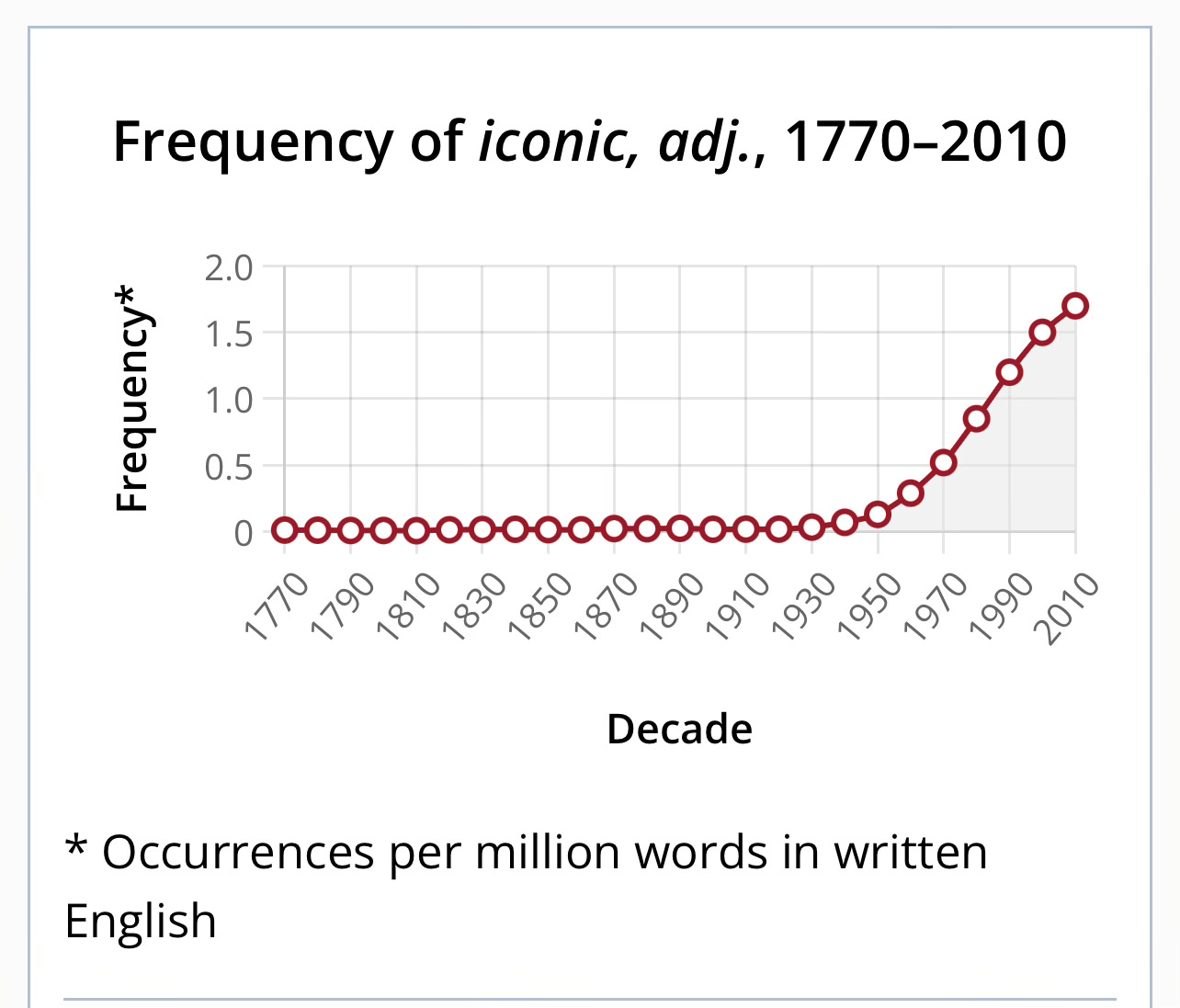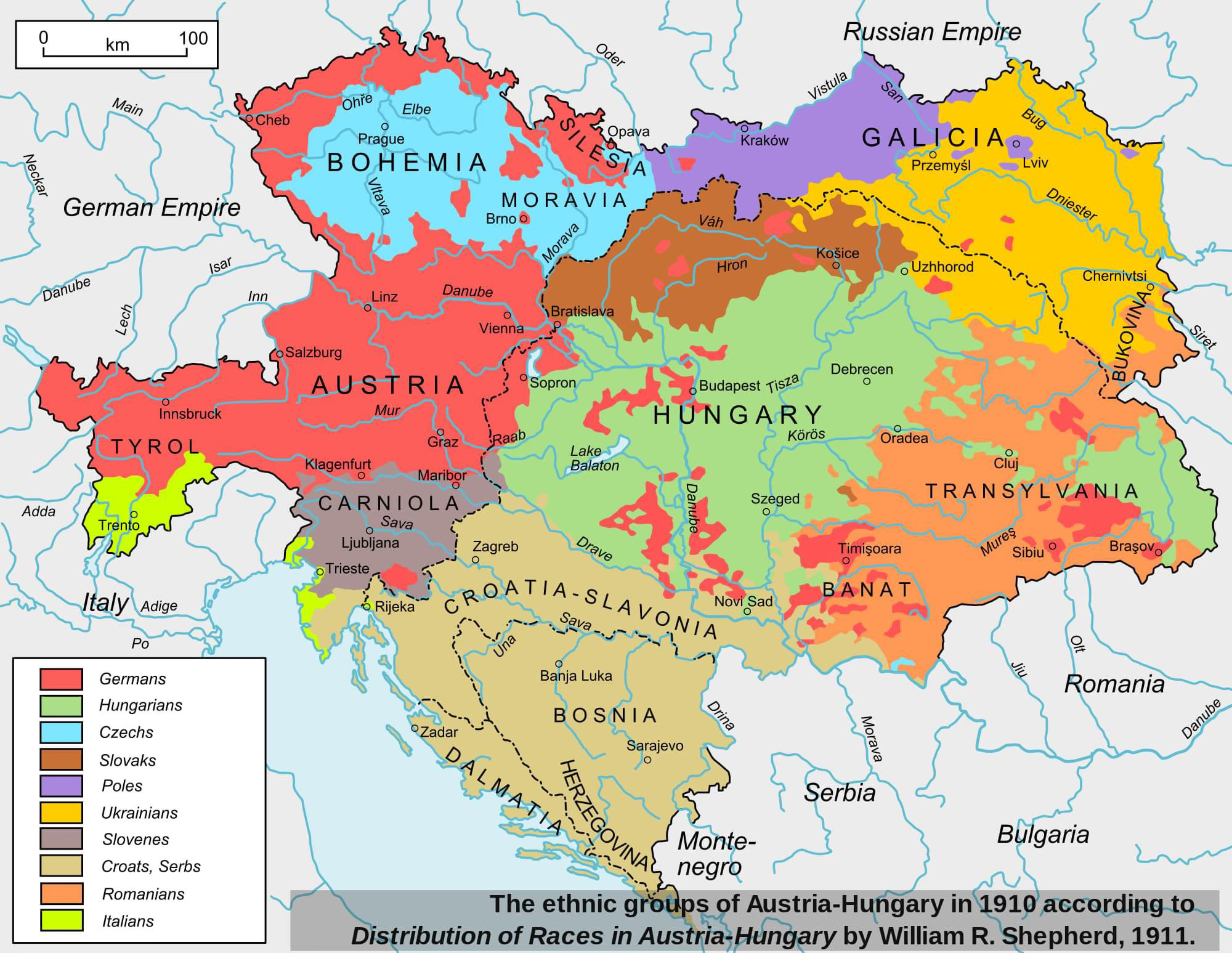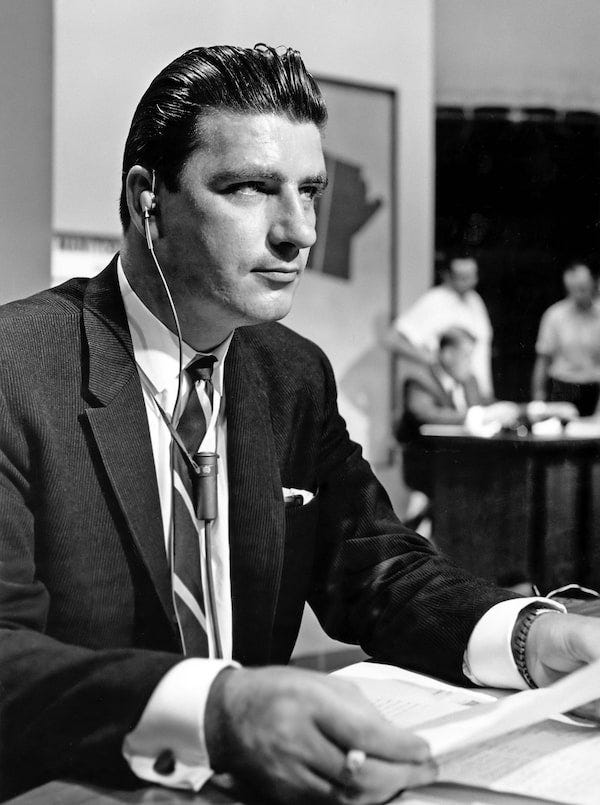Uranium, Nuclear Power Plants, Who's Rich and an Early Star of TV News
August 26, 2004 Volume 5 # 11
Uranium
There are only two big uranium producers in the world, one in Saskatchewan called Cigar Lake, the other in Kazakhstan called Kazatomprom. Neither of them seem to be well run. The one in Kazakhstan said this week it will produce of 65-69MM lbs of uranium next year; their earlier prediction was 80MM lbs. “I think that the new target might be wishful thinking,” said one commentator. “You can think of this as the market has just been told that 10% of 2025 production isn’t going to happen (think of what would happen if this happened in the oil or copper markets).”
On Friday, Sprott Uranium— which buys physical uranium— was up 5.29%. I own some. If nuclear power is now listed as Green Energy, the demand for uranium can only go higher.
Nuclear Plants
One of 55 nuclear power plants in China.
“About 60 reactors are under construction across the world. A further 110 are planned,” said the World Nuclear Association in July of this year. China is building 23 of them. The United States, still freaked out by Three Mile Island and the fictional movie The China Syndrome, is talking about nuclear but building none.
Three Mile Island in Pennsylvania. President Jimmy Carter, a navy-trained nuclear expert, visted the site. He is still alive. I covered it for the CBC. The one thing I remember is a CBS reporter who was having trouble writing a script; a producer said to him: “Throw in some shit about the China Syndrome.”
Submarines
Most, but not all, submarines are nuclear powered. They are probably the most effective naval vessels. Super expensive aircraft carriers are sitting ducks, easy targets for cheap hyper fast anti ship missiles. Better to stay beneath the waves.
What Does Rich Mean?
About 20 years ago the National Post asked me to do an article on what does it mean to be rich. I took a Swiss banker out to lunch and he said few Canadians think of thmselves as rich since they measure themselves against richer people they know.
An article in Barron’s this week about a poll done by the brokerage firm Charles Schwab. It asks different age groups how much net wroth do you need to be rich.
· Baby boomers: $2.8 million Born: 1946-1964
· Gen Xers: $2.7 million 1965-1980
· Millennials: $2.2 million 1981=1996
· Gen Zers: $1.2 million 1997-2012
The article didn’t say whether the net worth wish list included real esatate. I would think it is only liquid assets. I also think the rich net worth numbers are low.
Location changed the rich number:
“In several areas of the country, respondents reported higher-than-average estimates of what it takes to be wealthy,” says Barron’s. “In San Francisco, for instance, respondents pegged the baseline for wealth at $4.4 million, topping the list. Southern California followed at $3.4 million, then New York at $2.9 million, Denver, Seattle, and Washington, D.C. at $2.8 million, and Boston at $2.7 million.”
Feeling Rich:
Iconic
Is there a more overused word in modern English than Iconic? Everthing is Iconic. A quick Google shows Iconic Canadiana, an Iconic arch in Utah, the Iconic Gordie Howe Bridge and Elvis’s Iconic Graceland home.
Now this is an icon.
The Oxford English Dictionary says Iconic was first used in English in 1656.
a.1656–Of or pertaining to an icon, image, figure, or representation; of the nature of a portrait; spec. in Art, applied to the ancient portrait statues of victorious athletes commonly dedicated to divinities, and hence to memorial statues and busts executed according to a fixed or conventional type.
The OED even has a graph showing the rising use of Iconic.
Next is Historic. The German invasion of Russia is historic; a basketball score is not.
Peoples of the Austro-Hungarian Empire
Essay of the Week
Television news was a lot different in its early years. When I was a junior press officer at Expo 67 in Montreal, I was assigned to take Walter Cronkite and his family around the World’s Fair. Canadians knew he was, and approached him to say how much they liked his nightly broadcast. I was star-struck. Many years later, Chris Callery, a charming cameraman at the CBC’s bureau in London told me that when he worked for the American networks in London in the 1950s, the correspondent for CBS was so important that he would be invited to 10 Downing Street for a private one-on-one with the Prime Minister. By the time I started at the CBC in Montreal in March of 1968 the star factor was still there, though starting to wear off. One of the big names at the time was Tom Gould; glamorous, handsome, do anyhting for a story and probably a bit arrogant. I wrote his obituary in 2016.
Tom Gould was one of the first generation of star television reporters in Canada. As the United Nations correspondent for the CBC he covered the United States in the era of the civil rights movement in the early to mid 60s. He was in Birmingham, Alabama, in April of 1963 when the racist police chief, Bull Connor, set the dogs on black protestors; he and his camera crew stood behind Martin Luther King when he made his “I have a dream” speech in Washington in August of that year. During that period he also reported from the field in Vietnam.
“Tom was among the small corps of CBC trailblazers of Canadian TV journalism, along with (Michael) Maclear, (Morley) Safer, (Norman) DePoe, (Peter) Reilly, (Tom) Earle and (Bill) Cunningham. It's unfortunate that Tom's early work, and the work of the others hasn’t been digitized by the CBC,” said Peter Kent, now an MP, but once the reader of the National and a foreign correspondent. “That generation set the course for all serious TV journalists who followed, and who had the benefit of much better technology and editorial resources.”
In the mid 1960s he moved to CTV where as the first vice-president of news he effectively built the network’s news operation. He started Canada AM and handled the negotiations to bring Lloyd Robertson over from the CBC to CTV where Mr. Robertson read the nighty news for 35 years.
“When Tom Gould went to CTV News it was little more than a headline service,” said Bill Cunningham, another veteran correspondent who worked with and for Mr. Gould at both the CBC and CTV.
Craig Oliver, who is the chief political correspondent for CTV News in Ottawa, says Tom Gould lured him away from the CBC in 1972.
“In many ways he created the CTV News we have now. The CRTC said you guys (the owners of CTV) aren’t doing enough. You need Canadian content and a proper newscast. He hired people from the CBC and was there when Lloyd Robertson came aboard (in 1976). It gave us instant credibility and the audience swung with him,” said Mr. Oliver.
Thomas Gould, who has died at the age of 84, was born in Edmonton. He said he wanted to be a newspaper reporter from the age of 13, but he took a different route to get there. He didn’t like school and quit in the last year at Strathcona high school and for the next few years worked in a series of jobs, from a hard rock miner to a hand on a fishing boat.
He told the Montreal Star in 1963 that he had no regrets about not going to university. “I think to understand people and what motivates them you have to live with them,” said Mr. Gould. “I covered the Springhill mine disaster and I knew all the mining terms. I could picture what was going on underground.”
After three years of working stiff jobs, he landed as a junior with the Nanaimo Free Press. He moved through a series of newspaper and radio jobs, the next one always a rung up from the last, until he arrived in Ottawa as the the parliamentary correspondent for FP Publications.
During that time the handsome young reporter did some television work—he had learned the basics of broadcasting in radio—and was spotted by the CBC. He was hired by the CBC as its UN correspondent January of 1962 when Mr. Gould was 30 years old.
Using New York City as a base, Mr. Gould and his camera crew covered the United States, and in particular the big story of the day, the civil rights movement, as politicians in the southern United States fought to keep the races segregated in public places from schools to restaurants and buses.
By far the most dramatic event of his first year at the United Nations was the Cuban Missile Crisis, where the United States and the Soviet Union came close to nuclear war. Mr. Gould reported on it on both CBC radio and television. He would also do live broadcasts on specials on elections and political conventions. When President Kennedy was assassinated in November of 1963, Mr. Gould flew to Havana within six hours to cover reaction there.
In May of 1964 Mr. Gould was named the Far East correspondent for the CBC, and he was based in Tokyo, though later correspondents lived in Hong Kong to be much closer to the Vietnam War. Tom Gould shot documentaries on the War in Vietnam and provided extensive daily news coverage in the field, including covering the landing of US Marines in Danang. Several years ago in a talk on his life he told the audience that one of the difficult things in covering Vietnam was to improvise in the field to make the camera equipment as portable a possible to be able to move quickly and safely in a war zone.
While in Asia, and he interviewed the US Commander, and future Secretary of State, Alexander Haig. At various times in his long career interviewed many world leaders, including Indira Ghandi of India and China’s Deng Xioping,
Though Mr. Gould went on to other things, he returned to Vietnam when in 1975 when the country was collapsing to rescue five family members of his then wife, Nhi, who he had met in Vietnam.
“In the final days of the Vietnam War, Tom made a personal mission to Saigon to help rescue relatives of his Vietnamese wife, Nhi. Our CBC crew found out he was leaving on the same Canadian Forces flight that was evacuating the Canadian ambassador and though he was a CTV exec and carrying film out for CTV's Henry Champ he agreed as a professional courtesy, to carry my film report to the lab and satellite uplink in Hong Kong as well,” remembered Peter Kent.
“The irony was, I had a scoop on Henry - film of the Canadian ambassador evacuating his limo and art works rather than embassy employees.
But when Tom saw our report going out on the satellite uplink that night...he decided he had a claim on those pictures and told CTV staff in Toronto to lift our CBC sequence off the satellite and match our coverage. Such was the state of the craft in that day and Tom's highly competitive nature. He was one of a kind, one of a world-class breed of early TV journalists”
In 1968 Tom Gould was lured away from the CBC to become the first vice-president of news at CTV. At the time the network was a co-operative, owned by nine TV stations in different markets across Canada. Philip `Pip’ Wedge, who was vice-president of programming while Mr. Gould was at CTV, said the rivalry between the richer stations in Vancouver and Toronto made it a difficult place to work.
Among Mr. Gould’s many achievements at CTV was bringing Michael Maclear over from the CBC to start Maclear, the most successful half hour documentary series of its day. He also started the early morning network program, Canada AM in 1973.
“The story behind Canada AM was the network was putting an American soap opera on in the afternoon and they needed Canadian content to balance it off. At first it was given to the entertainment department, but when that didn't work, Murray (Chercover, CTV president) gave the planning to me,” Mr. Gould told the Globe in 2010.
The deal to hire Lloyd Robertson away from the CBC was done in the garden of Mr. Gould’s townhouse on Boswell Avenue in Toronto’s Annex.
“Tom gave me the chance to do things I couldn’t do at the CBC. The Guild (the journalist’s union) had just walked out because I broadcast from London. Tom said at the time `I have just secured the future of CTV News for the next 10 years. But I was there for 35,” said Mr. Robertson.
Though he was running the network Mr. Gould was too good on camera to waste full time in an office. He wrote and presented an end of newscast feature called The Backgrounder. His views were free market and small c Conservative, which mirrored those of most of the owners of CTV. He was also a co-host of W-5.
“Tom was a natural broadcaster, but he was always nervous and would sometimes go to the bathroom and throw up before going on air,” said his friend and colleague Bill Cunningham, another adventurous television reporter from the same era. “Tom and Morley Safer were the two best TV writers I worked with.”
Mr. Gould resigned from as an executive with CTV in 1976 but stayed on reading the Backgrounder. The Globe’s TV critic, Blaik Kirby, wrote of his quitting at the time: “… the real reason is Gould is tired of the stations running the network.”
Mr. Gould worked for a while at Global TV, and was a broadcasting consultant. He helped prep Progressive Conservative leader Brian Mulroney for his TV debates. In an e-mail, Mr. Mulroney said Mr. Gould worked “As a TV advisor for the debates, an area in which he excelled.”
He also produced a couple of dramas, the most ambitious was Divided Loyalties which appeared on the CTV Network in 1990. It told the story of the Iroquois Confederation during the American War of Independence. Mr. Gould was executive producer.
“At two hours in length (and it it had been cut down) we had to compress things, but the major scenes are all true,” he told the Toronto Star. “I’ve wanted to do this since 1974.”
Many people who spend their lives travelling for work like to stay put in retirement. Tom Gould was not one of them. He and his wife of the last 25 years, Jodey Porter, visited 45 countries.
“I am legally blind, so Tom was my guide,” said Ms. Porter, a retired assistant deputy minister of health in Ontario. “He was a heroic and gallant man.”
Thomas Clark Gould was born in Edmonton on October 29, 1931. He died of cancer at his home in Niagara-on-the-Lake on July 21, 2016. He is survived by his wife, Jodey Porter, his children Thomas Gould, Nancy Dery and Shannon Feldman and six grandsons.

